Suzanne L. Weekes & Konstantin A. Lurie

Worcester Polytechnic Institute
Worcester, Massachussetts, 01609
We work in the novel paradigm of spatio-temporal composites or dynamic materials. These are formations assembled from materials which are distributed on a microscale in space and in time. This material concept takes into consideration inertial, elastic, electromagnetic and other material properties that affect the dynamic behavior of various mechanical, electrical and environmental systems. In static or non-smart applications, the design variables, such as material density and stiffness, yield force and other structural parameters are position dependent but invariant in time. When it comes to dynamic applications, we also need temporal variability in the material properties in order to adequately match the changing environment. To this end, in dynamic material design, dynamic materials will take up the role played by ordinary composites in static material design. A dynamic disturbance on a scale much greater than the scale of a spatio-temporal microstructure will perceive this formation as a new material with its own effective properties.
By allowing spatio-temporal variability in the material constituents, we can create effects that are unachievable through purely spatial design. For example, by appropriately controlling the design factors of a dynamic composite, it is possible to selectively screen large domains in space-time from the invasion of long wave disturbances. One is also able to eliminate the cut-off frequency phenomenon in electromagnetic waveguides; and, dynamic materials may also act towards more effective high frequency power amplification and generation implemented through wave coupling.
Mathematically, the problem is formulated for linear, hyperbolic equations with spatio-temporally varying senior coefficients. Both analytic and computational means are applied to the analysis of the effective properties of dynamic materials generated by various microstructures in two or three spatial dimensions and time. Analytically, by applying homogenization, it will be possible to specify attainable bounds for such parameters related to the binary mixtures of isotropic dielectrics in the framework of Maxwell's theory. Computationally, direct numerical simulation of the original equations will be performed to understand the physics of wave propagation through heterogeneous media with complex microstructure. Together, both approaches will lead to the correct formulation and analysis of optimal material design in space-time in response to a dynamic environment.
Some Related Papers
-
Numerical Computation of Wave Propagation through Dynamic Materials
Applied Numerical Mathematics 37 (2001) 417-440, by S. L. Weekes -
A Stable Scheme for the Numerical Computation of Long Wave
Propagation in Temporal Laminates
to appear in J. Computational Physics, by S. L. W. -
Effective Properties of Smart Elastic Laminates and the Screening
Phenomenon
Int. J. Solids Structures (1997) Vol. 34, No. 13, 1633-1643, by K. A. Lurie (figures missing) -
G-closures of Material Sets in Space-Time and
Perspectives of Dynamic Control in the Coefficients of Linear
Hyperbolic Equations
J. of Control and Cybernetics, (1998) Vol. 27, No. 2, 283-294, by K. A. L. -
The Problem of Effective Properties of a Mixture of
Two Isotropic Dielectrics Distributed in Space-Time and the
Conservation Law for Wave Impedance in One-Dimensional Wave
Propagation
Proc. R. Soc. Lond. A. (1998) 454, 1767-1779, by K. A. L. -
Bounds for the Electromagnetic Material Properties
of a Spatio-Temporal Dielectric Polycrystal with Respect to
One-Dimensional Wave Propagation
Proc. R. Soc. Lond. A. (2000) 456, 1547-1557, by K. A. L. -
Low Frequency Longitudinal Vibrations of an Elastic
Bar Made of Dynamic Material and Excited at One End
Journal Math. Anal. and Appl., (2000) 251, 364-375, by K. A. L. -
Spatio-Temporal Dielectric Composites with Negative Values
of $\epsilon$ and $\mu$ and Negative Energy Density
submitted to Royal Society, by K. A. L. and S. L. W.
For t > 0 , the array moves along the x-axis with a uniform speed V . The material parameters (rho, k) thus become periodic functions of the argument (x-Vt)/e where e is a small parameter.
This material pattern may be characterized as a laminate in space-time. Such characterization does not imply, however, any actual material motion: the material itself remains motionless, whereas its property pattern is exposed to the uniform movement along the bar.
The long wave dynamic disturbances will perceive this formation as a new effective medium having no dispersion and moving with some background speed.
Like its uniform material counterpart, this material will allow D'Alembert waves travelling with some characteristic phase velocities.
Under a special choice of parameters for the density and stiffness rho and k , these waves may travel in the same direction.
This page contains some numerical computations which illustrate this coordinated wave motion.
In the following:
V is laminate velocity
a1 is char. speed of material 1
a2 is char. speed of material 2
s1, s2 are the effective
velocities
mp is proportion of material 1 in laminate
Click to enlarge plots
EXAMPLE:
Coordinated wave motion in a one-dimensional material subject to space-time
lamination of rho and
k .
(k1,rho1) = (1,1);
(k2,rho2) = (10,9);
mp = 0.5
For screening effect, choose V such that
0.60302269 < V < 1
or -1.0 < V < -0.60302269.
V = 0.8;
Initial data z=e^(-5x^2), z_t = 0
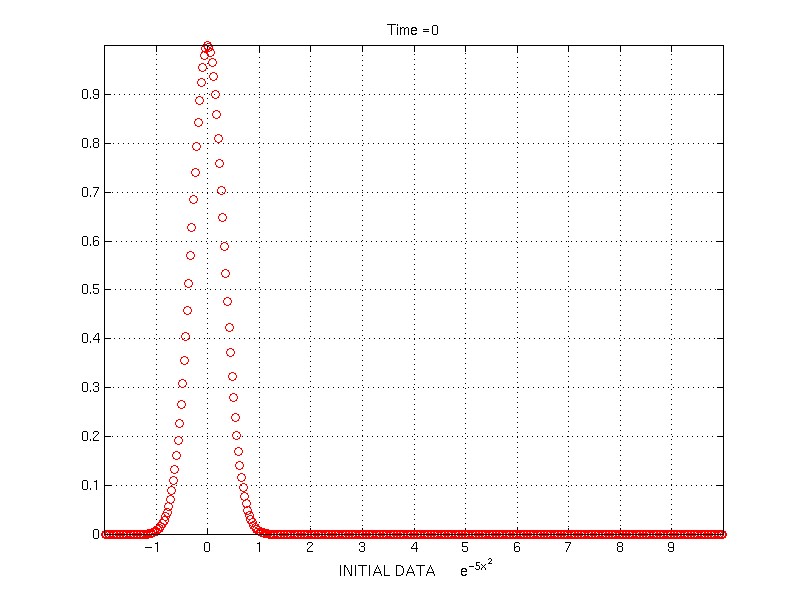
Time = 3.001
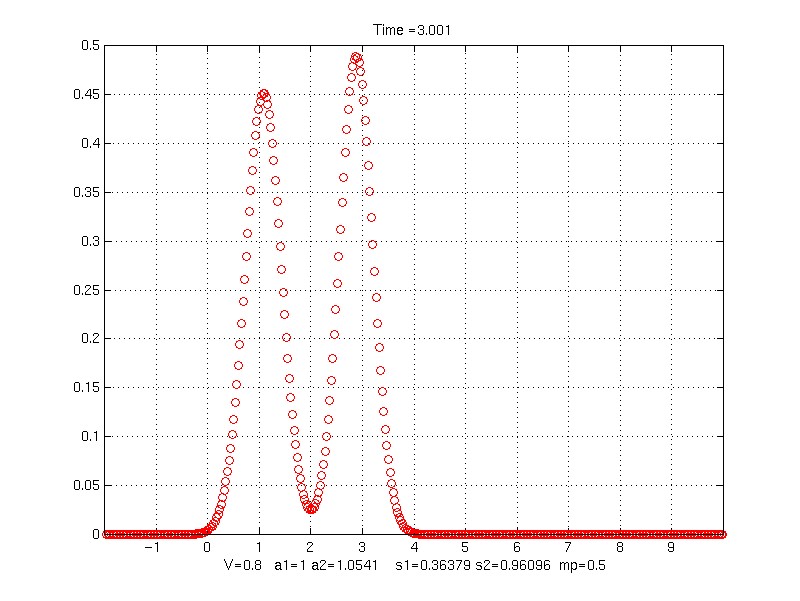
Time = 8
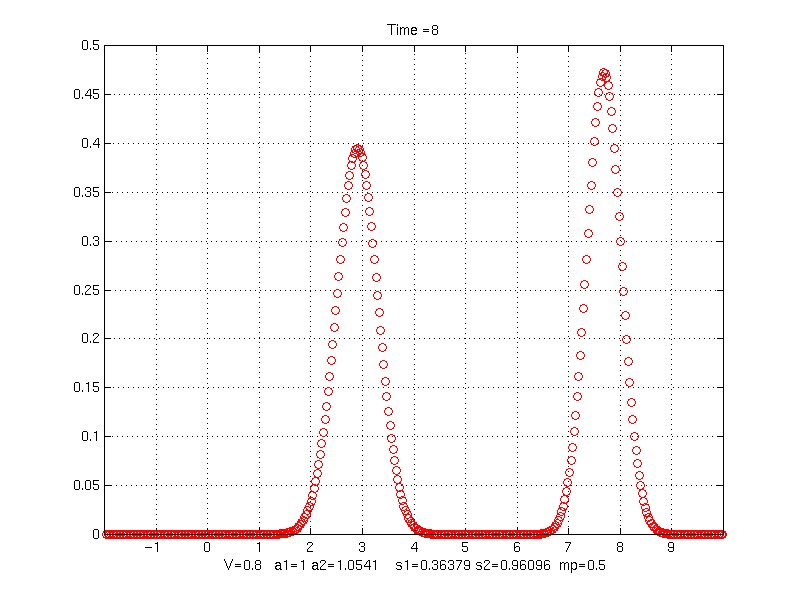
Contour plot of evolution of profile
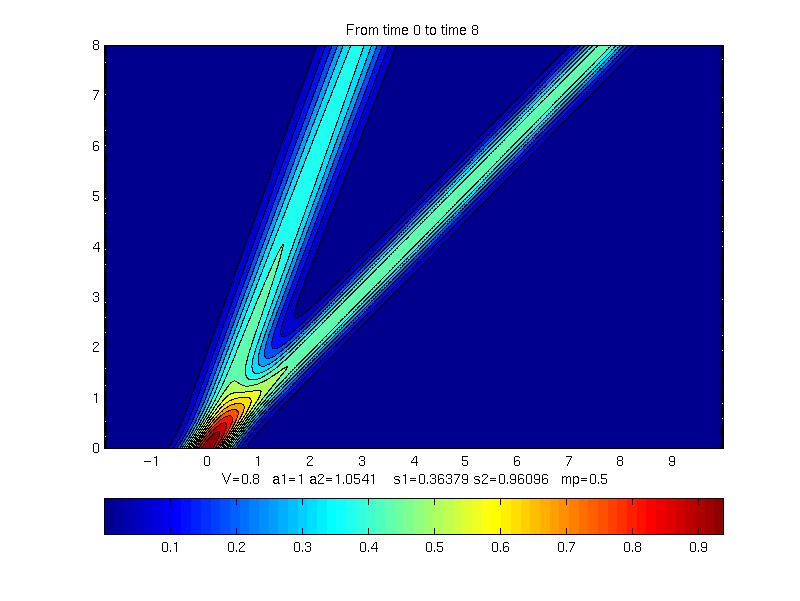
s1 = 0.36378913
s2 = 0.96095791
V = -0.8;
Time = 8
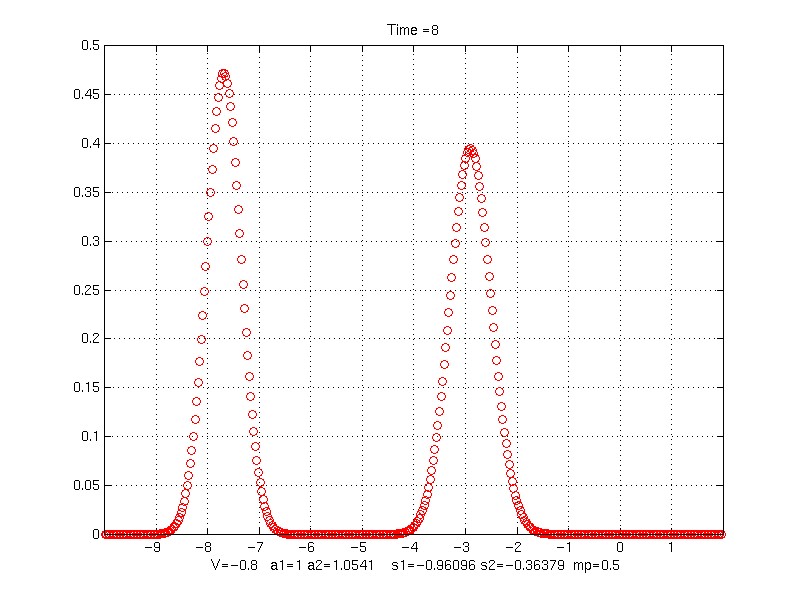
Contour plot of evolution of profile
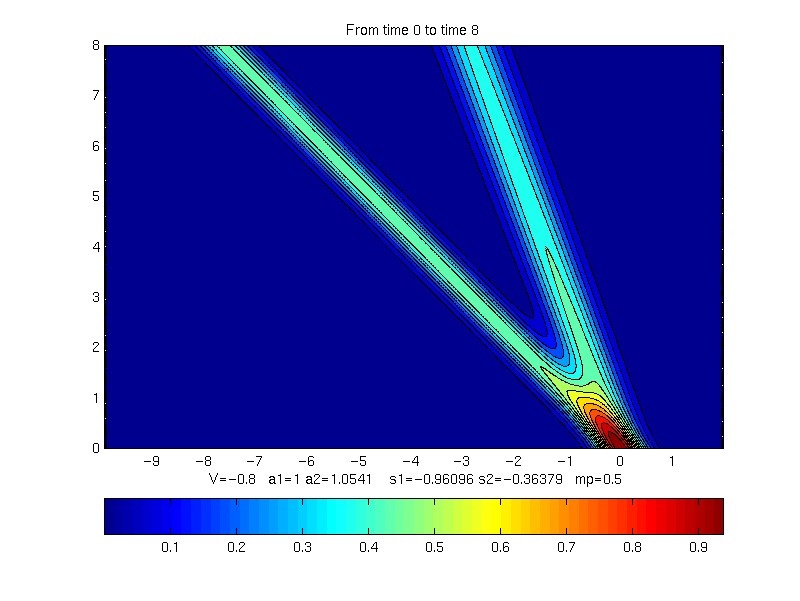
s1 = 0.36378913
s2 = 0.96095791
V = 0.3;
Time = 5
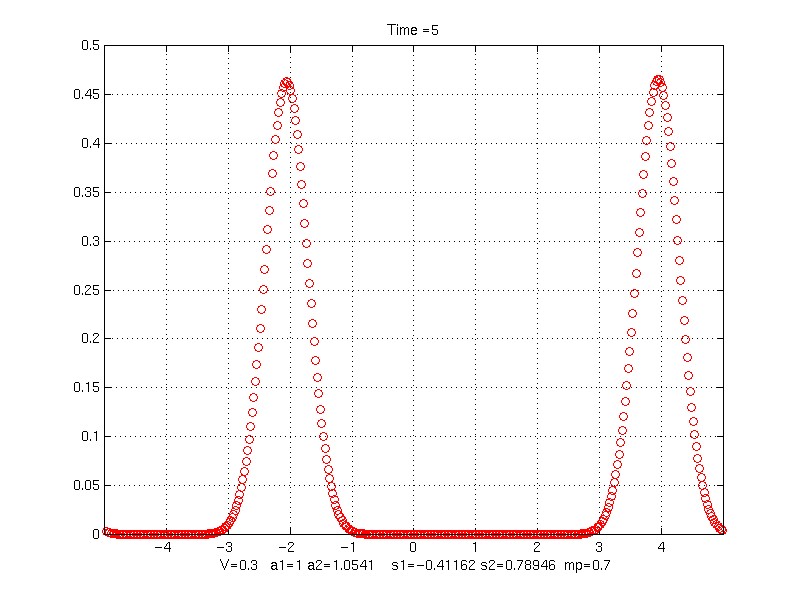
Contour plot of evolution of profile
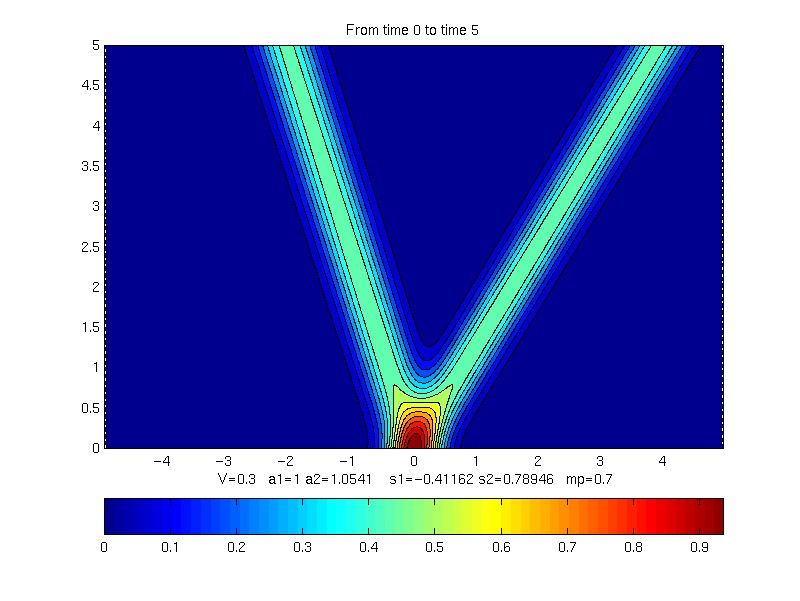
s1 = -0.41161806
s2 = 0.78946064
EFFECT OF LAYER WIDTH ON SOLUTION:
k1 = 1,
k2 = 10,
rho1 = 1,
rho1 = 2.5,
mp = 0.5,
V = 0.0;
s1 = -1.01929438
s2 = 1.01929438
to Time = 3.0;
20 property pair layers (40 grid points/layer)
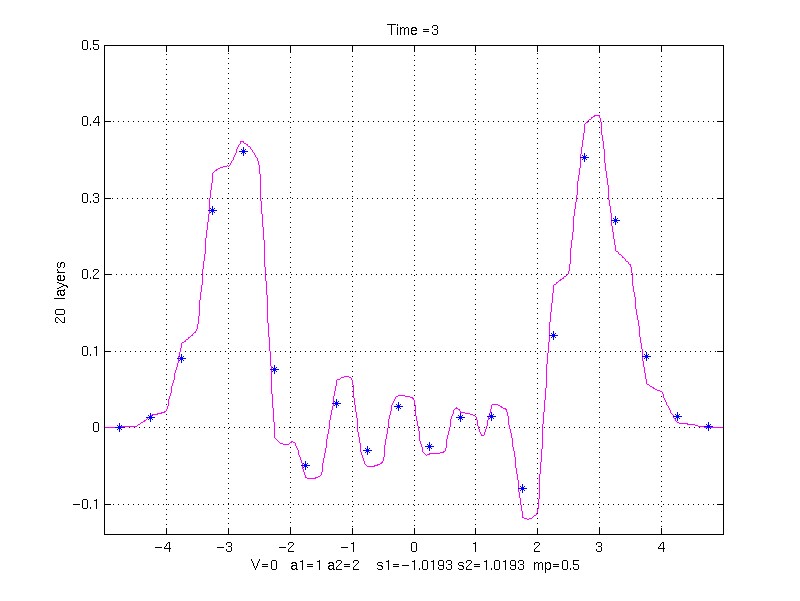
40 property pair layers (20 grid points/layer)
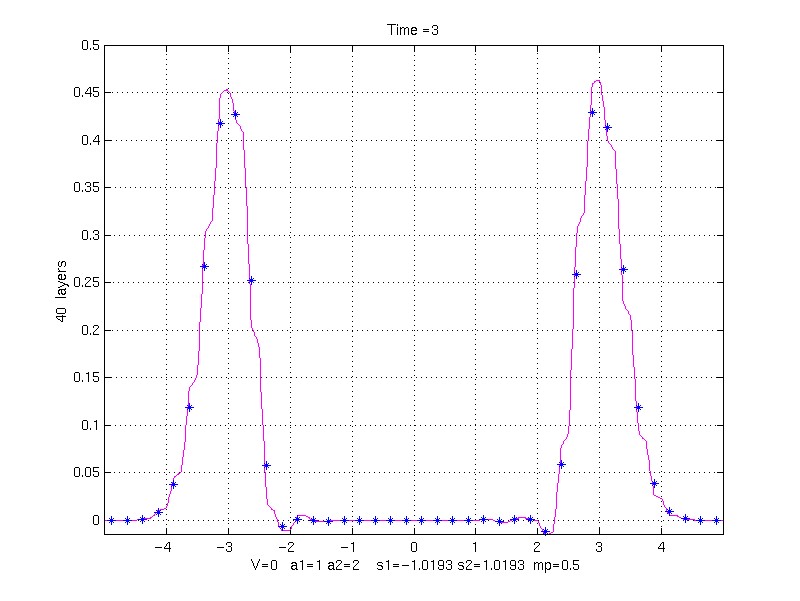
100 property pair layers (8 grid points/layer)
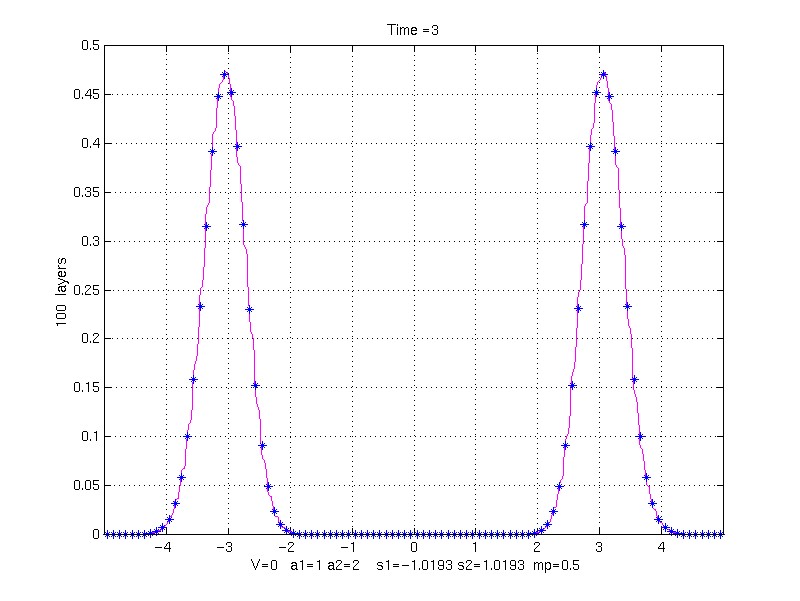
200 property pair layers (4 grid points/layer)
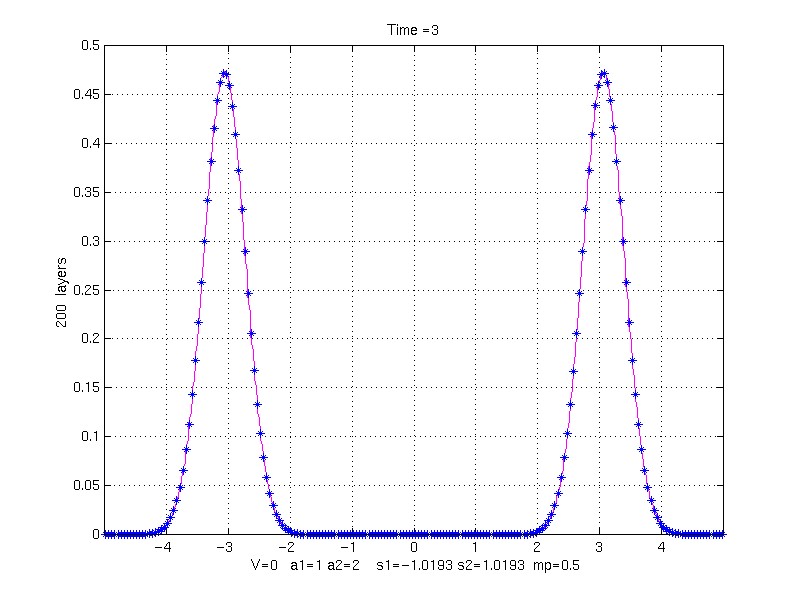
k1 = 1,
k2 = 10,
rho1 = 1,
rho1 = 9,
mp = 0.5,
V = 0.8;
s1 = 0.36378913
s2 = 0.96095791
to Time = 8.0
20 property pair layers (40 grid points/layer)
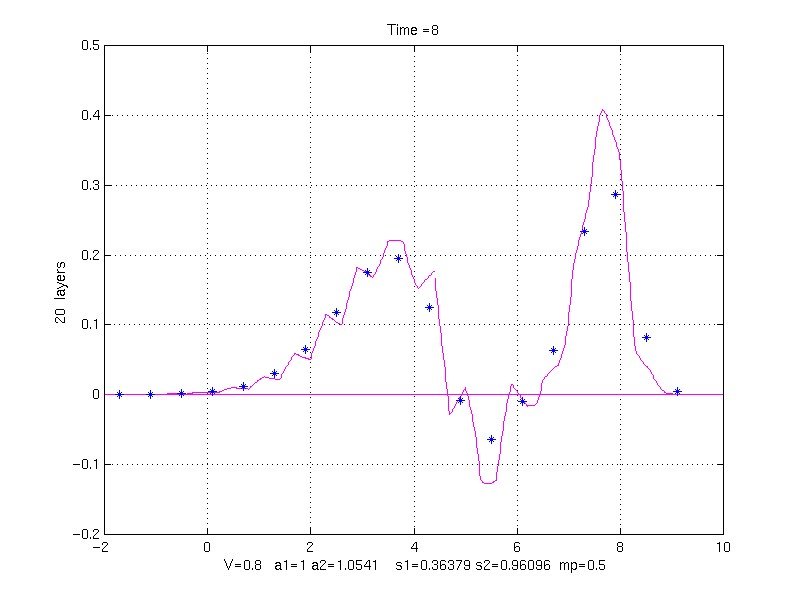
40 property pair layers (20 grid points/layer)
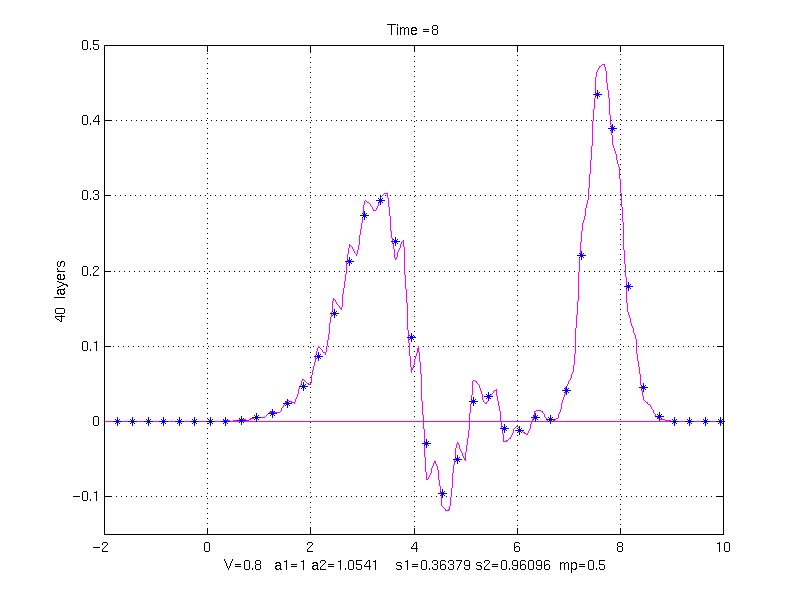
100 property pair layers (8 grid points/layer)
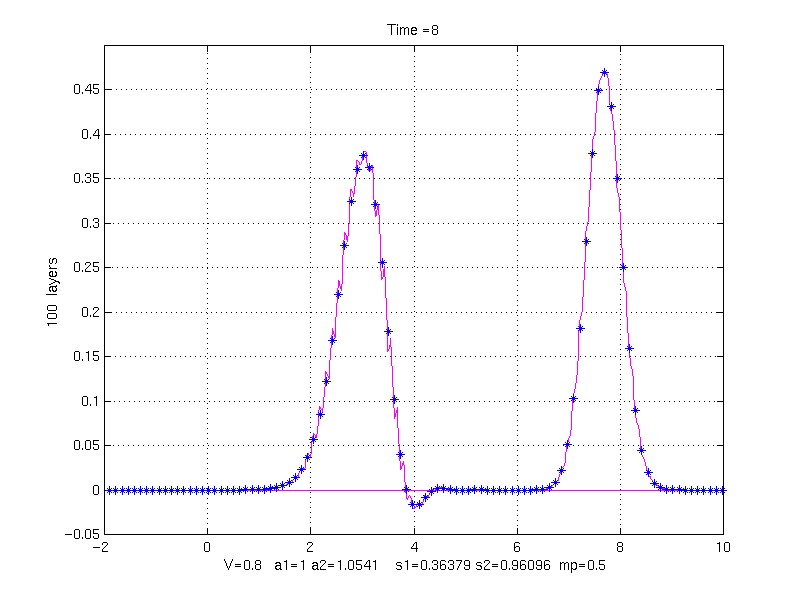
200 property pair layers (4 grid points/layer)
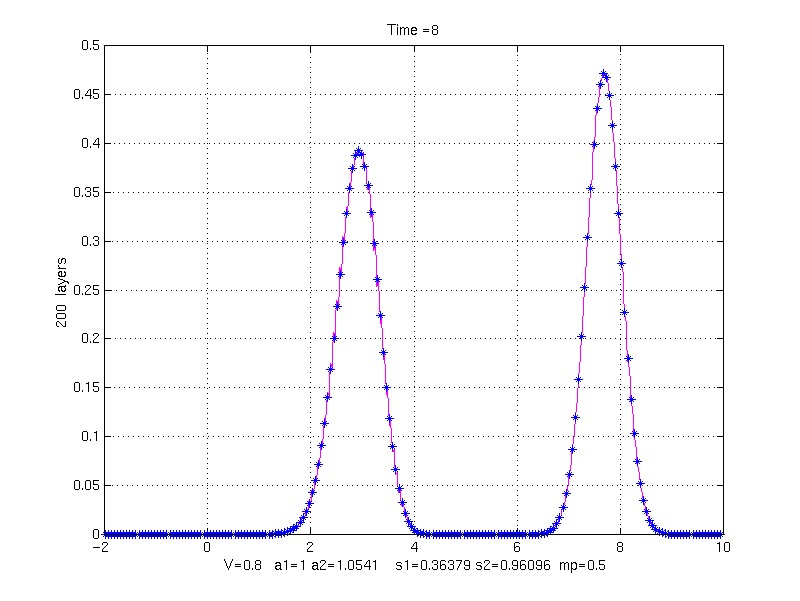
Effective Properties in Electromagnetic Material
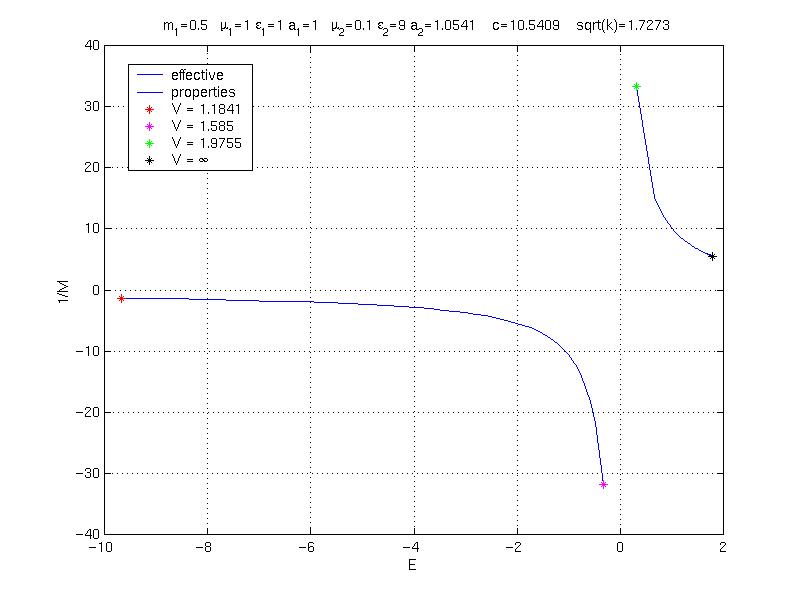
Initial data z=e^(-5x^2), z_t = 0
|
Time = 3.001 
|
Time = 8 
|
Contour plot of evolution of profile 
|
Time = 8 
|
Contour plot of evolution of profile 
|
Time = 5 
|
Contour plot of evolution of profile 
|
20 property pair layers (40 grid points/layer) 
|
40 property pair layers (20 grid points/layer) 
|
100 property pair layers (8 grid points/layer) 
|
200 property pair layers (4 grid points/layer) 
|
k1 = 1, k2 = 10, rho1 = 1, rho1 = 9, mp = 0.5, V = 0.8;
s1 = 0.36378913 s2 = 0.96095791
to Time = 8.0
20 property pair layers (40 grid points/layer) 
|
40 property pair layers (20 grid points/layer) 
|
100 property pair layers (8 grid points/layer) 
|
200 property pair layers (4 grid points/layer) 
|
Effective Properties in Electromagnetic Material
